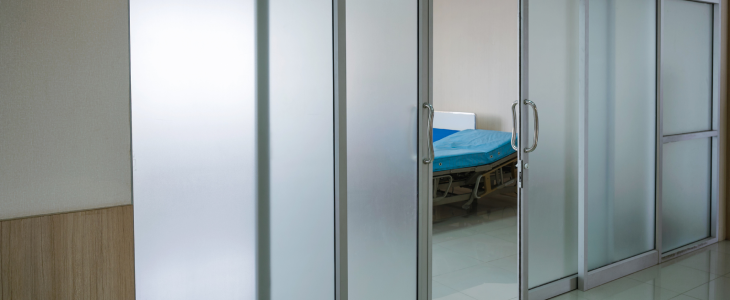Catastrophic injuries represent some of the most severe and life-altering events anyone can face, including spinal cord injuries, severe brain trauma, and multiple fractures. These injuries often result from significant accidents and can lead to permanent disability, requiring lifelong care and substantial medical expenses. The impacts extend beyond the physical, affecting the emotional and financial well-being of both the victims and their families.
At Pringle & Herigstad, P.C., our personal injury attorneys have a deep commitment to supporting victims of catastrophic injuries. With a history spanning over a century in North Dakota, we bring extensive experience and local expertise to each case. From our offices in Grand Forks and Minot, we work tirelessly to advocate for your rights and ensure you receive the maximum compensation possible. If you or a loved one has suffered a catastrophic injury, contact us today to discuss how we can help you through this challenging time and secure the support and justice you deserve.
Common Types of Catastrophic Injuries
The best way to understand what a catastrophic injury is may be to discuss some examples of this injury type. Catastrophic injuries refer to injuries such as:
- Paralysis: Losing the ability to move or control parts of the body is considered a catastrophic injury. This is true of paraplegia, which impacts the mobility of the lower body. It is also true of quadriplegia, which impacts all four limbs as well as the torso.
- Traumatic brain injuries (TBIs): While the severity of a traumatic brain injury can run a wide range, it is generally considered to be a type of catastrophic injury. TBIs can lead to constant pain such as chronic, severe headaches. There can also be some memory loss as well as loss of cognitive functions. TBIs can also end up causing secondary health problems such as neurological disorders including brain tumors and seizures.
- Limb amputation: A loss of a limb is considered to be a catastrophic injury. Sometimes, the limb is severed in an accident. Other times, damage sustained by the limb in the accident may necessitate its removal by medical professionals. Either way, it leaves the injury victim with the permanent loss of a body part. In turn, they lose all functional capabilities associated with the lost limb. As if the loss of a limb was not devastating enough in its own right, many who have experienced the loss of a limb continue to feel phantom pains in the missing limb area. This is due to the extensive nerve damage that comes with limb amputation.
- Loss of sight and loss of hearing: The loss of one of the senses, sight and hearing in particular, is considered a catastrophic injury. The loss of either will likely mean significant medical expenses for treatment purposes. Extensive rehabilitative efforts will also be made to assist the injured victim in living without sight or sound. Loss of either can make living the life the injury victim used to know impossible.
- Disfigurement: Burns and significant scarring resulting from an accident are also likely to be considered catastrophic injuries. They are permanent and cannot only be painful but also leave the victim severely depressed, particularly when they involve facial disfigurement. Scarring and disfigurement can also impact the victim’s mobility and have other physical consequences they will need to cope with.
Recovering Damages in a Catastrophic Injury Case
Damages in a personal injury case are a reflection of the harm you have suffered in an accident caused by someone else’s negligence or wrongdoing. When you are talking about catastrophic injury cases, damages can be significant. As a catastrophic injury victim, you may receive compensation for:
- Past medical bills
- Future medical bills
- Rehabilitation costs
- Lost wages
- Loss of earning capacity
- Pain and suffering
- Mental anguish
- Loss of enjoyment of life
All of these things are considered compensable damages and should be included in any damage award. To help ensure that they are included in a damage award, however, you will often need to advocate for their inclusion. Any defendant or anyone you are making such a damages claim against is likely to push back. After all, they could be on the hook for a lot of money and they will try what they can to get out of doing so. This is why having legal representation by your side in a catastrophic injury case can be so important. The intricacies and extent of the damages in these cases are great. Without the necessary knowledge and experience in handling these kinds of cases, the damages may not include everything to which the injury victim is entitled. The damages claim may also not be supported as strongly as it needed to be to withstand scrutiny and pushback from the other side.
Contact Our North Dakota Catastrophic Injury Attorneys Today
After suffering a catastrophic injury, you will need to adjust to a whole new way of life. There is so much physical and mental work ahead of you and worry about legal battles and how you will pay for your medical bills is not something that should land squarely on your shoulders. At Pringle & Herigstad, we are committed to our clients and fighting for their right to be fairly compensated after an accident. We are relentless in our pursuit of this. Let us fight on your behalf. Contact us today.
Pringle & Herigstad, P.C. is committed to supporting individuals in North Dakota, including Grand Forks, Minot, Fargo, Bismarck, Williston, Rugby, Devils Lake, Jamestown, and the surrounding areas. Our dedicated team is here to provide legal assistance and guidance to those facing the complex challenges that arise from these incidents.
